Get a Free WorkTrek Demo
Let's show you how WorkTrek can help you optimize your maintenance operation.
Try for freeA computerized maintenance management system (CMMS) is essential for the coordination of all activities related to the availability, productivity, and maintainability of complex systems. Modern computer resources have made it possible to considerably improve the effectiveness and efficiency in the field of maintenance through the use of CMMS. The software has evolved from relatively simple mainframe scheduling of maintenance activities to multi-user systems that cover a multitude of maintenance functions. The ability of CMMS to process large amounts of data in a targeted and rapid manner has opened up new possibilities for maintenance, facilitating a more deliberate and thoughtful approach to asset management.
Finding the right CMMS can be time-consuming and labor-intensive. You need to understand which Top 5 CMMS features will bring you the most value so you can focus on maintaining your equipment.
What Is A CMMS?
The acronym CMMS stands for Computerized Maintenance Management System. This software package was designed to manage maintenance globally, on a strategic, financial, and operational level. It is today the essential software of the industrial sector. Much more than simple computer programming, it is an assistant for maintenance teams, the cornerstone of industrial efficiency.
Because you can use it to achieve different goals, there are different ways to describe computerized maintenance management software. On the one hand, it is sophisticated software that captures and uses thousands of data points to provide an overview of how a facility is operating or detailed information about individual pieces of equipment. In terms of functionality, CMMS software offers businesses the ability to monitor inventory levels, manage work orders, set up and schedule preventive maintenance programs, and quickly generate accurate reports. But on another level, it’s just the solution maintenance managers need. Automating processes and streamlining workflows makes your life less stressful by making your workday more predictable.
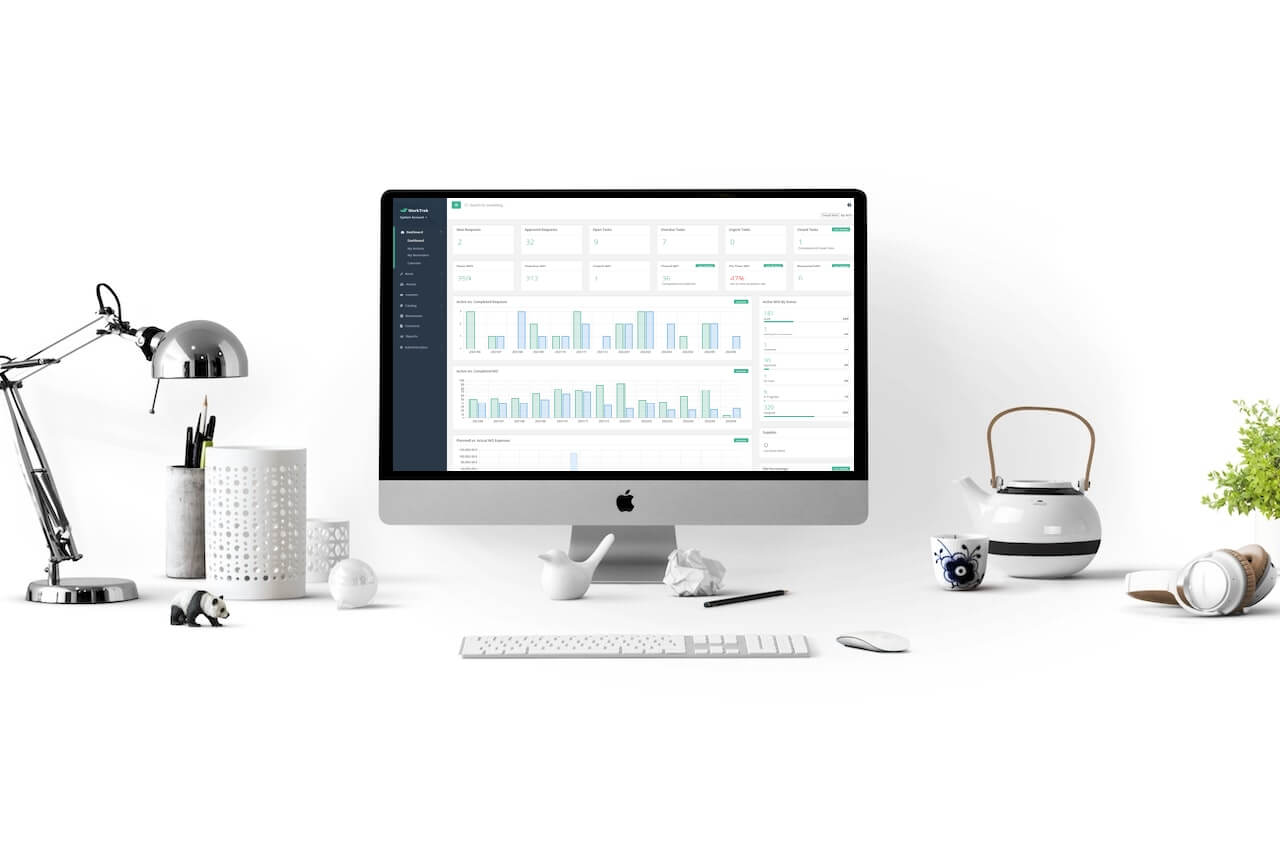
How Does A CMMS Work?
The easiest way to understand how it works is to first look at two old ways of managing maintenance, paper, and spreadsheets.
With paper, you always run the risk of losing or corrupting data. Every time you doodle a new work order, chances are you’ll include mistakes. And even if you copy everything perfectly, chances are someone will lose that piece of paper, your only copy of that essential data. With spreadsheets, it’s the opposite problem. The risks of copying and pasting bad data are still there, but now you often have too many copies of the same data. Why is this a problem? Because as soon as someone updates one copy’s information, all other disconnected copies are out of sync. In the end, each member of the team works from their own version of the truth. Everyone is out of it, but no one realizes it. Read also, why your business might need CMMS.

The History Of CMMS
Its origins date back to the 1970s when industrial tools became more complex, with the transition from mechanics to electronics and the emergence of robotics. The industrial sector is becoming more and more demanding. The “zero breakdowns, zero defect” injunctions are everywhere. In the 1980s, it was computerization that transformed the maintenance professions. The first maintenance management programs appear. The 1990s marked the expansion of CMMS, which was no longer content to serve the industry, but also the tertiary sector. It was finally in the 2000s that CMMS software took off. And the web has something to do with it. With reduced hardware investment and reduced installation costs, the full web CMMS enters the scene and promises great capabilities in terms of ergonomics and functionality. Nowadays, in the era of the Cloud and galloping digitization, the user experience is enriched. A CMMS software package is essential for operational teams.

What Is The Role Of A CMMS?
Essential in the industrial sector, the CMMS has many uses. In particular, it allows operational staff and the management team to:
- Knowing and identifying and managing the equipment to be maintained: inventory, location, management of relative information by type of equipment.
- Manage maintenance: preventive, curative, corrective, and improvement.
- Manage intervention requests.
- Manage spare parts stocks: by keeping the store up to date, better-controlling restocking, and paying attention to stock valuation.
- Manage purchases of supplies and services (equipment rental): purchase requests, orders, and supplier invoicing.
- Coordinate staff and schedules: activities, jobs, load plan, forecasts, etc.
- Manage costs and budget: preparation of budgets, periodic monitoring, reports of variances between forecasts and actual costs, etc.
Monitor the performance of the activity thanks to the key performance indicators represented in the form of dashboards specifying the requests, the statistics, the number of alerts, the MTTR (Mean Time To Repair), MTBF (Mean Time Between Failures), Pareto’s law, etc.

CMMS: Who Is Affected By This Type Of Software?
The CMMS concerns several sectors of activity, as long as they involve maintenance of equipment, buildings, or installations. Here is a non-exhaustive list:
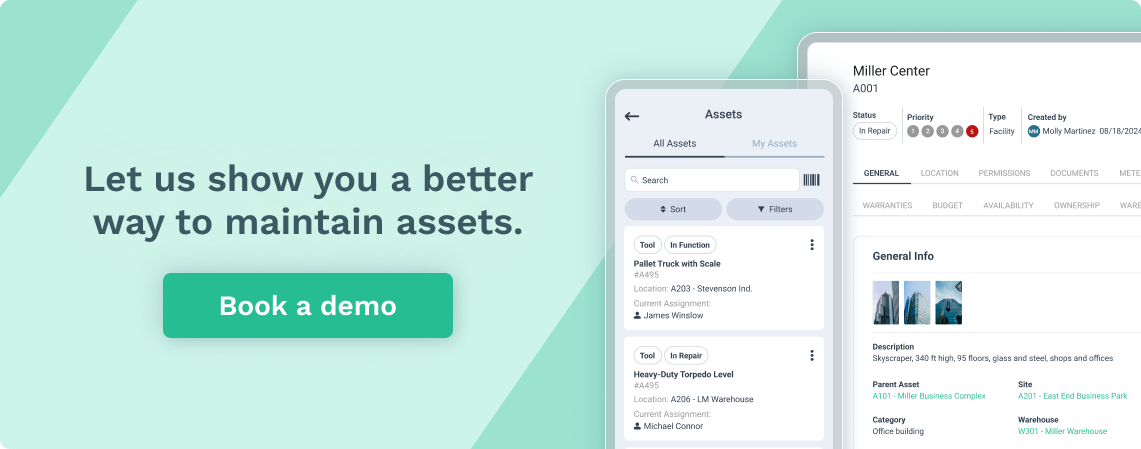
- The real estate sector uses it to centralize information related to building maintenance.
- The energy sector uses it in the management of network equipment.
- The transport sector uses CMMS to monitor its infrastructures.
- The public sector uses it in the management of public buildings in communities.
- The medical sector uses CMMS for the maintenance of equipment, essential for medical operations.
- The industrial sector uses it for the maintenance of automated machines.
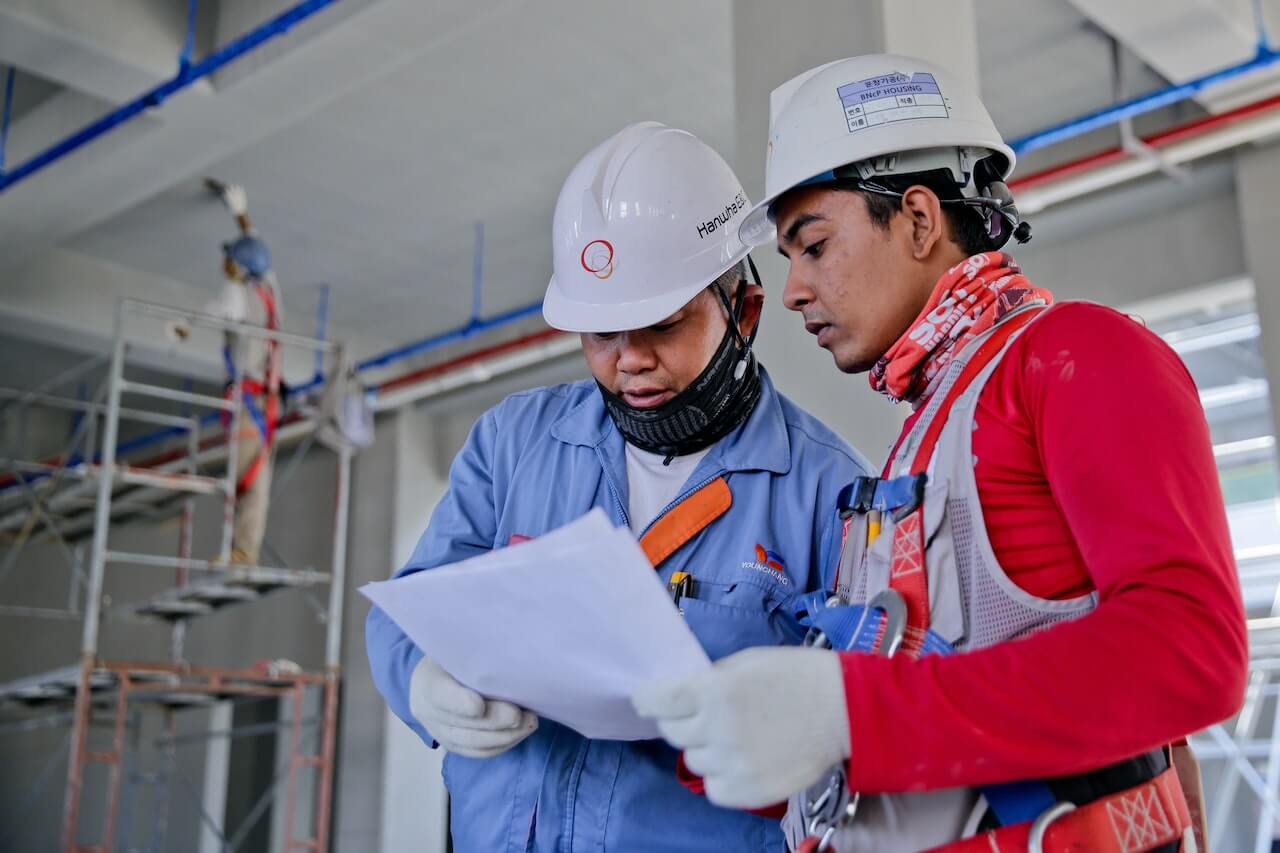
Who Uses CMMS?
As said, CMMS software is a key tool for manufacturers, all sectors combined, who seek to maintain their production equipment in operational conditions.
Within the company itself, it serves:
- Inevitably, industrial maintenance technicians are the first users of CMMS software.
- The maintenance manager will also actively use the CMMS to monitor interventions, manage his stock of parts and monitor his budget.
- Production teams can also use it to have visibility on past and future interventions.
- The purchasing department can also refer to this tool for negotiations.
- The logistics team will also have an eye on the CMMS to manage the stocks of parts and anticipate possible future supplies.
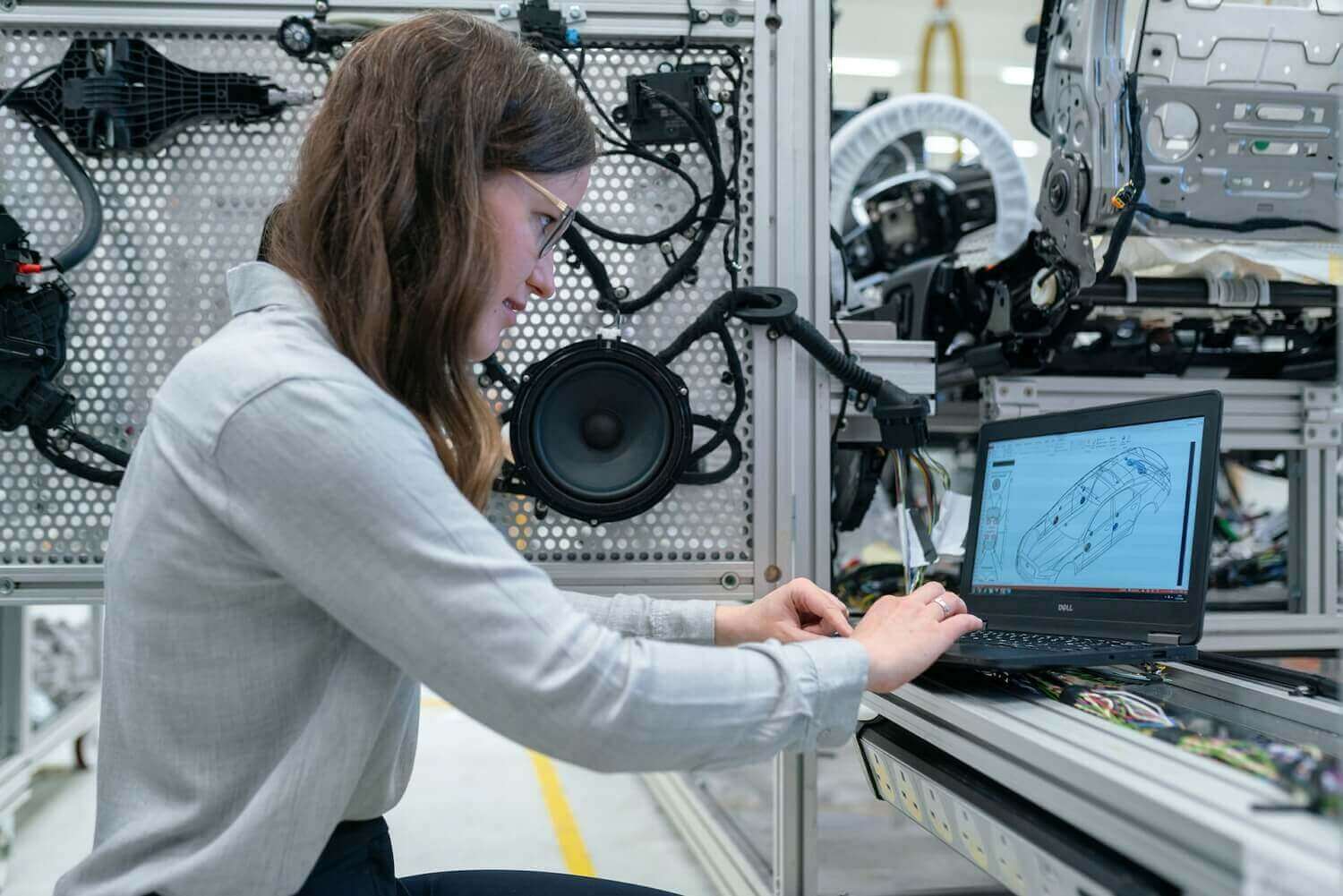
Top 5 CMMS Features
The CMMS (Computer-aided maintenance management) is a management software specially dedicated to companies in order to help them in the maintenance of their activities. This management tool includes many advantages, including five main ones, which have become essential for any company wishing to optimize its maintenance while reducing its maintenance costs.
Here is a zoom on these features!
-
Managing your equipment
With the CMMS, you manage your equipment in an optimal way. You can inventory and locate them with ease.
In addition, the CMMS allows you to manage information dedicated to each type of equipment. Whether production equipment, premises, vehicles, etc. you have easy management. This management also includes technical documentation, such as plans, or manufacturer documentation.
The CMMS software assists you by offering you the perfect knowledge of your equipment fleet. Thanks to the creation of this repository and the Full Web CMMS solutions, all your information is easily accessible to you internally and via the Internet.
-
Managing your maintenance
This is the second strong point of the functionalities of CMMS software. Thanks to the assistance of a CMMS, the maintenance of all of your company’s equipment is guaranteed.
The CMMS allows you to manage both corrective and preventive maintenance. She can help you with:
- Set up a new preventive plan based on past events,
- Define the conditions for condition-based maintenance,
- Log and trace each maintenance operation.
-
Managing your purchases
Regarding your purchases, the CMMS can save you money by taking charge of the purchasing conditions of your suppliers and allowing you to easily compare them with each other.
As for the integration of purchase requests into the CMMS software, it allows technicians and members of the maintenance department to have an optimal follow-up. They know at all times what the current orders are, with which suppliers, etc.
-
Stock management
For a company, CMMS software is particularly interesting for its inventory management features. Indeed, the software knows what quantities of products enter and leave the store, what parts are reserved for interventions, and what are the minimum and/or maximum quantities of replenishment.
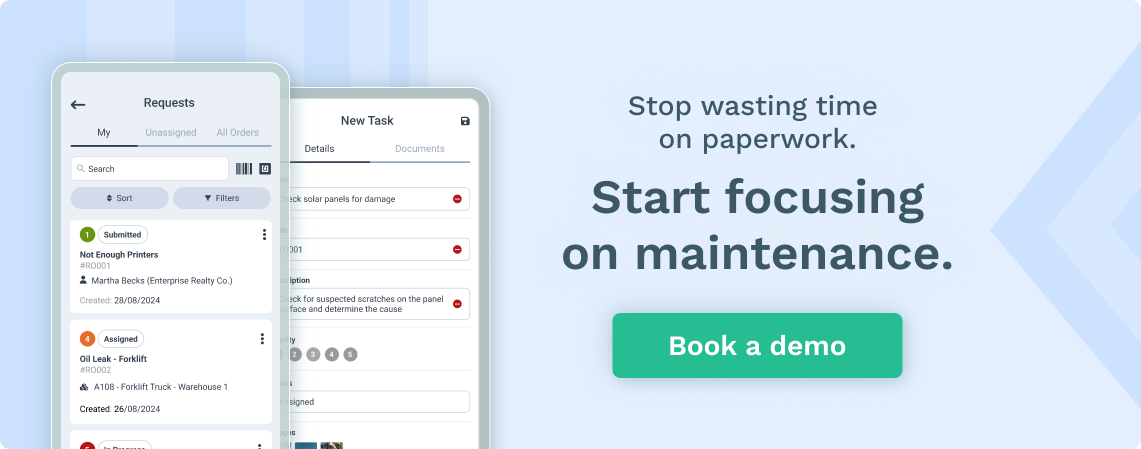
The CMMS software also allows recording:
- equivalent items,
- supplier price catalogs,
- links with the equipment tree,
- Etc.
-
Managing your staff
The CMMS software also manages the workload schedules of your teams with planning assistance tools, as well as the provisional schedule of the work to be carried out. It also allows the monitoring of time spent by each speaker.
By assisting the maintenance department of your company, the CMMS provides you with considerable assistance and optimizes its productivity while reducing costs, in particular those related to the maintenance and upkeep of your equipment.
The five features above are the most common, but the CMMS includes many others, such as the management of regulatory controls, condition monitoring or the monitoring of key performance indicators.
Try now for free
To get an idea of the benefits of CMMS software, request a demo of our tool!
How to choose a CMMS software: advantages and features
To be able to have all the advantages listed up to now, it is essential to choose the right software that gives excellent work performance. Choosing it requires a preliminary study of the needs of a company and the objectives it wants to achieve over time, so as to be able to train and prepare personnel for its use.
How to choose a CMMS software: advantages and features are, in fact, important that all employees and insiders have a clear understanding of the functions of such sophisticated software and that it is promoted by all the managers of the organization.
The purchase of the software is an investment that changes the pace of work and consequently the coding systems on the plants.
The first consideration to be made will therefore be what specifications a CMMS software of this kind must have for the company under consideration; check the capacity of the software, understand which companies use it and their improvements, its congruence with any pre-existing software, the culture of the company personnel, who will need to be trained regarding the use of the new software.
With the help of CMMS, companies can control and manage production facilities, tools, and equipment used in daily operations. A software product must meet the following criteria to fall into the maintenance management system category:
- Manage different asset types in multiple locations.
- Maintain an inventory of required replacement parts, service tools, materials, and consumables.
- Schedule maintenance tasks, including replacement, repair, and inspection.
- Control and distribute labor and spare parts for maintenance activities.
- Provides reporting and analysis on machinery productivity, maintenance costs, and asset utilization.
- Ensure facilities comply with all applicable safety and environmental laws.
- Provide field technicians with a mobile-friendly interface or mobile app.
By using a CMMS to help companies plan and manage assets and related maintenance expenses, companies can cost-effectively extend the useful life of assets.









